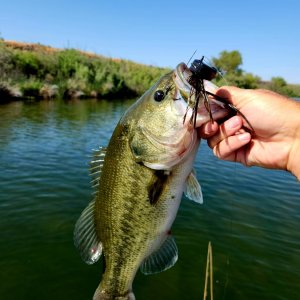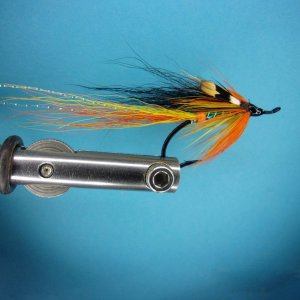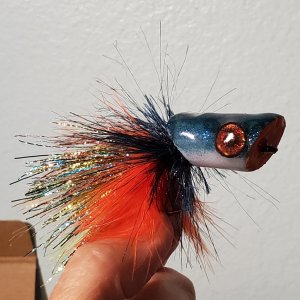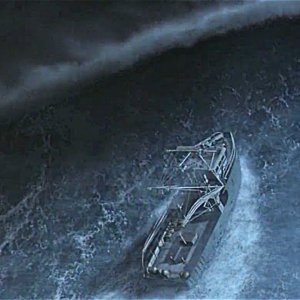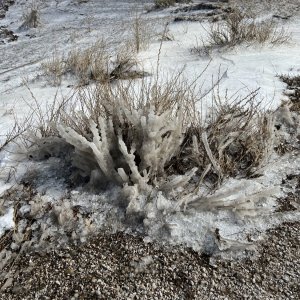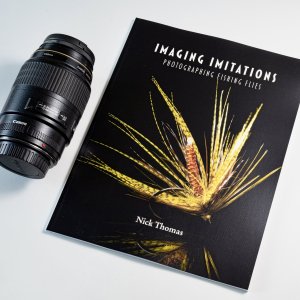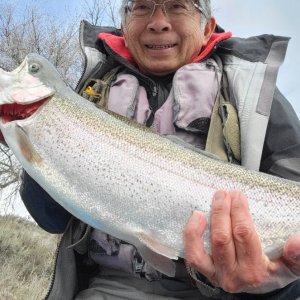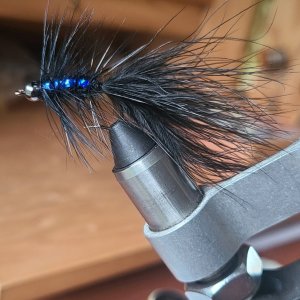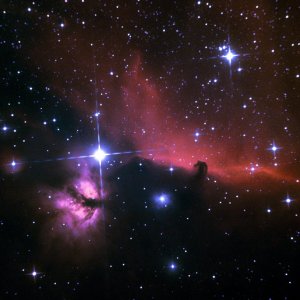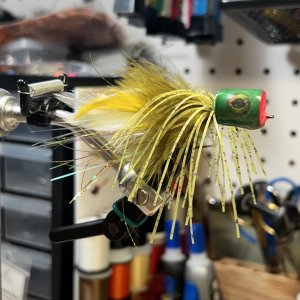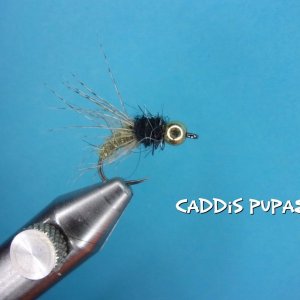You are using an out of date browser. It may not display this or other websites correctly.
You should upgrade or use an alternative browser.
You should upgrade or use an alternative browser.
Rezzies
- Thread starter Theron
- Start date
Bambooflyguy
Life of the Party
If this is true…..C&R (catch & refrigerate) would be the way to tell?? I just let them all go, not that I’ve caught many lately.Dark red flesh is one of the hallmarks, as opposed to more orange-ish flesh in ocean coho.
I collect my quota of rezzies caught in the winter/spring, as they are my favorite fish for the smoker. Smoked whole and hard for beer snacks...
Just Fish Stories
Freshly Spawned
I just cleaned my first coho that had been clipped. The fish was a hen with sea lice and full of eggs. The meat was real red. The live waight could not have been over 2 1/2 pounds. Was this a jack rezzy?Dark red flesh is one of the hallmarks, as opposed to more orange-ish flesh in ocean coho.
DimeBrite
Saltwater fly fisherman
100% rezzieI just cleaned my first coho that had been clipped. The fish was a hen with sea lice and full of eggs. The meat was real red. The live waight could not have been over 2 1/2 pounds. Was this a jack rezzy?
Not to be confused with blackmouth which is the term puget sound uses for resident chinook.
Interesting about the flesh.Dark red flesh is one of the hallmarks, as opposed to more orange-ish flesh in ocean coho.
I got a clipped coho this year that had almost white meat. I wonder what it had been eating/up to.
Last edited:
A jack Coho is essentially trout sized, the Rezzies don't get too big, 2 and a half lbs sounds about rightI just cleaned my first coho that had been clipped. The fish was a hen with sea lice and full of eggs. The meat was real red. The live waight could not have been over 2 1/2 pounds. Was this a jack rezzy?
Divad
Whitefish
If you catch a jack rezzie in the Sound is it really a jack  whose to say it’s returning and not sampling water it regularly does.
whose to say it’s returning and not sampling water it regularly does.
I’d say that 2.5lb rezzie is just a rezzie that didn’t go out to sea yet. Enjoy that wonderful fish feast @Just Fish Stories
I’d say that 2.5lb rezzie is just a rezzie that didn’t go out to sea yet. Enjoy that wonderful fish feast @Just Fish Stories
Just Fish Stories
Freshly Spawned
Half of it was great!!
I think rezzies can get significantly larger than 2.5 lbs.
SF
SF
I agree that these resident (stay at home) coho get significantly larger than 2.5#s. When MA 9 opened for Chinook in mid-July while mooching for Chinook about every other trip we put 5# coho in the boat and a number of 4# fish. 1 of the 5# fish that was dinner. Like most fish populations some individuals grow faster than others. This is especially true with fish like resident coho where those fish who find high concentrations of krill and later small bait grow faster that are feeding areas with lower concentrations of forage. I would expect that those mid-July fish 4 and 5# would have grown to 6 to 7#s by the first of September. BTW WDFW samplers checked several 7# coho in July at Everett (MA 9?) some of which cut sockeye red.
Why are not there more of those larger resident coho this time of year? The likely answer is that most with the potential to reach that size end up like those that made my dinner plate in July! Those 2.5 #ers being caught now were 14 inch fish in early July. My observations is that as those resident coho reach that 2/2.5# size they are feeding much more heavily on bait fish and thus become more vulnerable to our baitfish imitating flies.
Keeping in mind in June and July WDFW estimates that over 17,000 of those resident coho were harvested in MA 10.
Jack coho regardless of having a resident (PS) or ocean feeding pattern are returning as 2-year-old fish rather than as the normal 3 year adult. Typically the returning run with have around 1% of the coho as those 14 or so inch Jacks. However once of twice a decade there will be returns with much higher Jack abundances (Indicator of a better adult return the next year?). IN those years I have had some wonderful fly fishing for them in terminal areas where several dozens of these trout size as while some adult fish, Puget Sound fishing at its best?
Curt
Why are not there more of those larger resident coho this time of year? The likely answer is that most with the potential to reach that size end up like those that made my dinner plate in July! Those 2.5 #ers being caught now were 14 inch fish in early July. My observations is that as those resident coho reach that 2/2.5# size they are feeding much more heavily on bait fish and thus become more vulnerable to our baitfish imitating flies.
Keeping in mind in June and July WDFW estimates that over 17,000 of those resident coho were harvested in MA 10.
Jack coho regardless of having a resident (PS) or ocean feeding pattern are returning as 2-year-old fish rather than as the normal 3 year adult. Typically the returning run with have around 1% of the coho as those 14 or so inch Jacks. However once of twice a decade there will be returns with much higher Jack abundances (Indicator of a better adult return the next year?). IN those years I have had some wonderful fly fishing for them in terminal areas where several dozens of these trout size as while some adult fish, Puget Sound fishing at its best?
Curt

